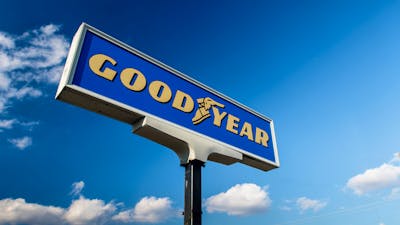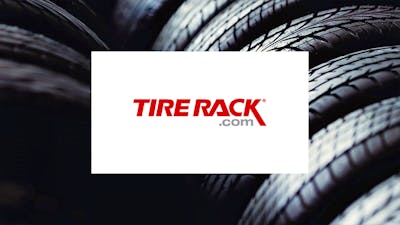Best Tires for the Mazda CX-5 in 2024
You're ready to replace the factory tires on your beloved Mazda CX-5, but which new tires are the best option to choose? The tires Mazda chose for the CX-5 from the factory may not be the best choice for your driving style or your location, so it’s very important to do your research before choosing any old tire brand.
Get the Best Deals on Tires
Car Talk recommends all the excellent tire options below.
Have an older Mazda-CX-5? See tire sizes for previous years.
Best Tires for the Mazda CX-5 Sport and Touring
- Kumho Crugen HP71 - Best budget tire
- Goodyear Assurance MaxLife - Best mid-priced tire
- Michelin Crossclimate2 - Best superior tire
Best Tires for the Mazda CX-5 Grand Touring, Grand Touring Reserve, and Signature
- General Altimax RT43 - Best budget tire
- BFGoodrich Advantage T/A Sport LT - Best mid-priced tire
- Michelin Premier LTX - Best superior tire
Original Equipment CX-5 Tires
What tires are on my Mazda CX-5? The current generation CX-5 is sold in multiple trims with several tire sizes:
- The Mazda CX-5 Sport and Touring trims come with 17-inch wheels and P225/65R17 tires. The factory tire for these trims is the Yokohama Geolandar G91A.
- The CX-5 Grand Touring, Grand Touring Reserve, and Signature trims come with 19-inch wheels and 225/55R19 tires. The factory tire for these vehicles is the Toyo A36.
Shop Tires Online and Save
Online tire prices are usually less than in store

Top Replacement Tire Brands for Mazda CX-5
We’ve recommended three replacement tires in 17- and 19-inch sizes, in budget, moderately priced and cost-no-object varieties. Whether your pockets are deeper than the Mariana trench or Ebenezer Scrooge considers you a role model, don’t worry; we’ve got you covered. All of these tires have ratings of four-stars or higher based on consumer surveys:
17-inch Tires for Mazda CX-5
- Budget: Kumho Crugen HP71 - At just $155 per tire, the Crugen HP71 is a compelling choice for tire shoppers whose CX-5 has 17-inch wheels. There’s a long tread life rating and solid customer reviews to boot.
- Moderately Priced: Goodyear Assurance MaxLife - As it turns out, $173 buys a whole lot of 17-inch tire. The Assurance Maxlife features a staggeringly long tread life rating, a great fuel economy focus, and solid customer reviews.
- Cost-No-Object: Michelin CrossClimate2 - The CrossCimate2 has one of the most interesting tread patterns found on a tire today, but the tires are well reviewed and feature excellent cold weather and snow ratings.
19-inch Tires for Mazda CX-5
- Budget: General Altimax RT43 - The Altimax has an astounding tread life rating, great customer reviews and a somewhat budget-friendly price tag to boot.
- Moderately Priced: BFGoodrich Advantage T/A Sport LT - The Advantage T/A Sport LT is a great tire for folks that live in places where the weather can turn at the drop of a hat. It’s also got some of the best customer reviews and one of the longest tread life ratings on the market today.
- Cost-No-Object: Michelin CrossClimate2 - The Michelins are not cheap, at $247 each, but the long-spoken phrase “just pay for the Michelins” is accurate. Car Talk has been tracking the testing of the CrossClimate2 on a 2018 Mazda CX-5 for over a year and the tire is performing flawlessly.
When Should You Replace Tires?
There are two regular milestones that will suggest that it’s time to replace the tires, not only on your CX-5, but any vehicle in your driveway: Time and mileage.
Considering most drivers cover between 12,000 and 15,000 miles per year, the vast majority of CX-5 owners are going to be past the mileage that their original equipment tires were intended to cover before they’ll go past the tire’s usable age.
The life of your tire can be somewhat predicted by its UTQG (Uniform Tire Quality Grade) rating. Tire manufacturers apply their own grades to tires for treadwear, traction and temperature. When you’re researching tires online, a UTQG will come up next to the tire name in three digits and a number (ex. 500 A A).
You can glean a bit of info from the tires by reading this rating:
- 500 - The durability rating of a tire, compared to a control tire with a treadlife of 100. To obtain a grade, tires run on a 640 kilometer course for 11,520 km. Every 1,280 km, the tread depth is measured, to provide a projected tread life. The higher the number, the longer the predicted treadlife.
- A - This is the Traction rating of a tire, which indicates how well a tire stops in wet conditions. The highest letter grade is AA, followed by A, B and C.
- A - The second letter in the UTQG is the Temperature rating, which indicates how well a tire holds up to extreme heat. A is the highest, followed by B and C.
Original equipment Michelin Crossclimate SUV tires on the CX-5 earn a decent 580 AA UTGQ rating. Unless they are damaged, these tires could last as long as 58,000 miles before you need to replace them.
The other consideration is time. Each tire has a raised date code on the sidewall. The number begins with the letters “DOT” followed by 12 digits in three four-digit groups. The date code is the third group of four digits. To decipher the date of your tires, the first two digits represent the WEEK the tire was produced, and the second two digits represent the YEAR.
For example, if your tire’s date code is 3217, that indicates the tire was manufactured in the 37th week of 2017, or some time between September 11 and 17th that year.
Once tires go beyond five years old, it’s time to consider replacing them. Tires are made up not just of rubber and steel or kevlar belts, but chemicals that help the tires resist UV rays, temperature changes and a lot of other environmental hazards. Those chemicals start to break down after five years or so, and the tires aren’t doing the job that they need to do.
Why Not Replace with Original Equipment Tires?
There’s no harm in replacing your tires with the shoes it came with from the factory. However, depending on what kind of driver you are, there are significant reasons to purchase something different.
You only need to purchase ONE set of tires for your car every four years or so, depending on how much you drive. When an auto manufacturer purchases tires, they buy them by the hundreds of thousands. For the manufacturer, the decision to choose a supplier one brand or another comes down to a price point.
Looking at reviews for tires, it’s easy to see that many people prefer to replace the OE tire with a better, more focused upgrade. The CX-5’s factory tires aren’t rated as well as many other choices, and there are several other options that last longer and have better fuel economy ratings.
Changing Mazda CX-5 Tire Sizes
Depending on the year and model, you may be shopping tires to fit anything between 15-inch for older models to 19-inch wheels with various widths and sidewall sizes along the way. It is possible to change the wheel and tire sizes, but a general rule of thumb is to keep the total diameter of wheel and tire the same. So, that means that downsizing an 18-inch wheel to a 17-inch wheel would include a proportionate upsizing of the tire sidewall to compensate.
Downsizing wheels has its advantages. Benefits include:
- Better ride quality – More rubber means more cushion for poor road conditions.
- Cost reduction – Big tires are expensive, so moving to a smaller wheel size will mean less costly tire purchases.
- Seasonal changes – Winter and snow tires are available for a larger selection of smaller wheel sizes and the narrower footprint will provide better traction.
- Off-road – Many people choose to downsize wheels for off-road use to increase the vehicle’s shock absorption capabilities and bump traction on loose surfaces.
On the other side of the coin, going up in wheel size has its benefits:
- Better handling – Slimmer profile tires makes for less rubber to move around.
- Better looks – This one’s subjective, but many people feel that larger wheels look better than smaller wheels with more rubber.
- Better braking – Larger, wider wheels provide a bigger patch of rubber on the ground to slow the vehicle, reducing braking distance.
How to Read Tire Sizes
When reading tire sizes, it’s important to understand what the numbers mean. The Mazda CX-5’s 17-inch wheels come with P225/65R17 106V XL all-season tires:
- 225 - indicates the width of the tire from one sidewall to the other in millimeters. This tire is 225 millimeters wide.
- 65 - indicates the aspect ratio, or sidewall height, as a percentage of the tire’s width. In this case, it’s 65 percent or of the tire’s width.
- R - means radial tires. Radials are the most common type of automotive tire and have fabric woven in at various angles with tread that is strengthened with additional layers of rubber.
- 17 - indicates the wheel diameter.
- 106 - is the tire’s load rating.
- V - is the tire’s speed rating. V-rated tires have a maximum top speed of 149 mph.
You may have noticed that the Mazda CX-5’s two tire sizes have different diameters and also different aspect ratios. Generally, automakers choose tires that have the same outer diameter. This allows them to have only one speedometer setting.
Now that you know what comes on a new CX-5 and how to read the size numbers, let’s look at the different types of tires available to you. Depending on the type of driving you’re doing, where you live, and the weather, you have a variety of choices for tire types:
- Touring and All-season tires - provide a smooth ride, good wet and dry traction, decent winter traction, and longer tread life. These tires are acceptable for winter use but can’t be expected to provide the traction and stopping power that a dedicated winter tire can.
- Performance tires - are focused on providing confident handling, better wet and dry traction, and a sporty feel. Their higher grip and speed ratings come with a tradeoff of shortened tread life and reduced ride quality.
- All-terrain tires - are built to maximize off-road traction and provide good durability overall. Their construction means more noise and less comfort on the road, but winter traction and tread wear is acceptable.
- All weather tires - like the Michelin CrossClimate2 offer snow duty and the usual benefits of all-season tires, with none of the downsides of dedicated winter tires.
- Winter and snow tires - are made with special rubber compounds that maintain grip and pliability when temperatures drop. They are also built with special tread patterns to maximize the vehicle’s ability to start and stop on very slippery roads.
Car Talk Community's Favorite Tires
Car Talk's very active online Community has many interesting and thoughtful perspectives on the best tire brands in the industry, based on real life user experience and knowledge.
Read more on the Best Tires in the industry according to the Car Talk Community here.
Tire Sizes By Year
| Year | Trim | Size |
|---|
Shop Tires Online and Save
Online tire prices are usually less than in store

Mazda CX-5 Tire FAQ
- How long do Mazda CX-5 tires last?
You should expect 50,000 miles out of a set of tires. On the outside, you’re looking at 70,000 miles, but you should always be measuring tires by tread depth, not mileage.
- What size tires does a Mazda CX-5 have?
That depends on the trim level. Sport and Touring trims have P225/65R17 tires. Grand Touring and Grand Touring Reserve trims have P225/55R19.
- What is the best Mazda CX-5 tire pressure?
Check inside your driver’s side door for a white and yellow label that will tell you the exact tire pressure recommendations for your CX-5model. That tire pressure can also change depending on the load of passengers you’re carrying, as well as the cargo load. Note that the pressure on the tire itself is never the correct setting, but rather a maximum.
- How often should I rotate my CX-5’s tires?
Rotating tires is more about the tire than it is about the car. A typical rotation interval is somewhere between 5,000 and 7,000 miles, though specific cars and tires may change those numbers a bit. The CX-5 is either a rear-wheel or four-wheel drive-based car, so the rear tires will be worn more quickly than the rears. Do not blow off this service.
- What is the best CX-5 tire change kit?
Your Mazda CX-5 should have come equipped with a compact spare tire and changing tools in the trunk. In this case, you already have everything you need to physically change the tire, but you may want to carry an extra roadside emergency kit with an upgraded lug wrench, jumper cables, and emergency markers just in case.













